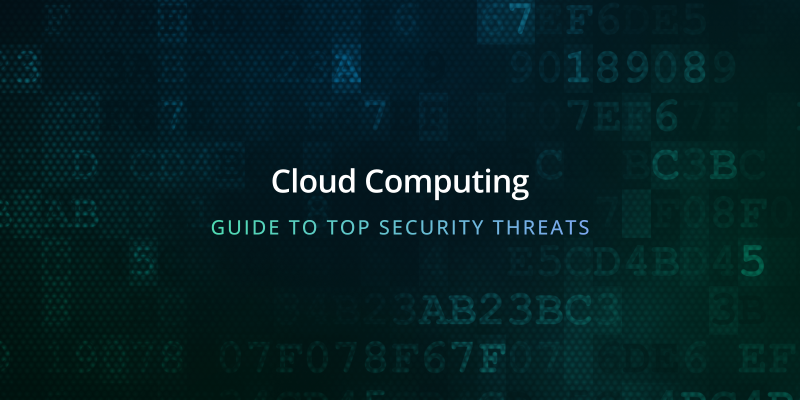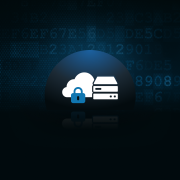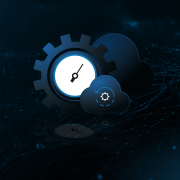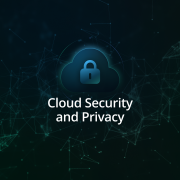
Your Guide to Top Security Threats in Cloud Computing
Cloud adoption has been on the rise, and an increasing number of companies are recognizing the significant benefits of migrating their workloads to the cloud. The allure of enhanced efficiency, streamlined operations, and a competitive edge is driving this widespread adoption.
At the same time, however, organizations face significant cloud security challenges, including operational and strategic difficulties when adopting and managing cloud based systems. Cloud environments present unique security concerns, and organizations must be vigilant about the potential risks. The rapid expansion of cloud assets and infrastructure increases the attack surface, introducing new vulnerabilities that must be managed to protect cloud environments. Failing to acknowledge and address these risks can result in detrimental consequences for businesses venturing into the dynamic realm of cloud computing.
In this article, we will discuss security threats in cloud based systems and cover the top cloud security risks, striking a balance between cloud enthusiasm and skepticism.
An Introduction to Cloud Security
Cloud security is a collection of policies, technologies, and controls designed to safeguard cloud computing environments from a wide range of security threats such as data breaches, account hijacking, or insider threats. These can lead to compromising sensitive data and disrupting business operations, which, in turn, can affect the confidentiality, integrity, and availability of information stored and processed in cloud infrastructure.
To address these challenges, organizations must implement comprehensive security measures, including strong access management, data encryption, and continuous monitoring. By proactively managing common cloud security threats, businesses can protect their valuable assets and maintain trust in their cloud services.
In short, as organizations increasingly migrate their operations and data to the cloud, the importance of robust cloud security has never been greater.
Common Cloud Computing Security Risks
While the complete elimination of risk is an impossible feat, organizations must strive to manage and secure all cloud assets and accounts across multiple cloud platforms and cloud systems. By understanding the common security risks associated with cloud environments, businesses can prepare themselves to address these challenges in a proactive manner. Let’s explore four significant cloud security issues:
Data Breaches
Data breaches are a significant concern in cloud computing. As evidenced by IBM Security Report, 83% organizations have experienced multiple breaches. The chief reasons for these are misconfigurations or vulnerabilities that can lead to unauthorized access to data stored in the cloud, potentially exposing sensitive data such as, for example, personal health information. There is also the related risk of data loss. This reality makes it essential to implement data protection measures to safeguard cloud data and ensure data privacy. In practice, this involves crafting robust security measures, including encryption, access controls, and regular audits.
What’s more, cloud-based deployments, accessible from the public internet, increase the likelihood of unauthorized access if security is improperly configured or credentials are compromised. By implementing comprehensive security protocols, organizations can protect their valuable data against data breaches in the cloud.
The Costly Impact of a Data Breach
A data breach in a cloud environment can have far-reaching and costly consequences for any organization. When sensitive data is exposed or stolen, companies may face significant financial losses, with the average cost of a data breach estimated at around $4 million. Beyond the immediate financial impact, organizations often suffer reputational damage that can erode customer trust and lead to lost business opportunities. Regulatory penalties are another serious concern, as non-compliance with data protection laws like GDPR and HIPAA can result in substantial fines. By prioritizing data protection, adopting proactive security measures, and maintaining a strong security posture, organizations can better defend against the damaging effects of a data breach in the cloud.
Cloud Service Outages
Sometimes cloud computing applications and services hosted in the cloud are unavailable for reasons beyond an organization’s control. Users may experience poor connection, slow service performance, or, in the worst case, total service disruption. As already mentioned, such events can be unpredictable and are often outside of your direct control—just like any major cyber security incident.
To address this challenge, organizations should implement a comprehensive backup strategy that includes a disaster recovery plan, failover systems, and regular testing to ensure the availability of critical services during outages.
Insider Threats
Although external threats often dominate cyberattack headlines, insider threats, whether stemming from malicious intent or negligence, pose potentially greater costs and dangers. Insider threats are also more frequent; a recent Verizon report highlights that, on average, external threats compromise around 200 million records. In contrast, incidents involving an insider threat actor have led to the exposure of 1 billion records or more. In a cloud environment, these incidents are usually the result of the activity of an employee or a contractor who has the access to sensitive data and systems. Human error also counts as an insider threat, but let’s not forget that not everyone has the intention to put the company at risk.
To mitigate insider threats, organizations should implement strict access controls to each service, including privileged access management and role based access control, conduct thorough background checks, and provide security awareness training to employees. And don’t forget to build processes and guardrails to help people avoid human errors that can result in business-critical data breaches.
Cloud Misconfigurations
Misconfigured cloud settings are a common cause of security incidents. Nearly a quarter of security breaches occurred due to cloud infrastructure’s misconfigurations (Check Point’s 2022 Cloud Security Report). The main risk comes from a combination of errors that occur during the implementation phase and unauthorized changes made later on. Organizations should regularly audit their cloud configurations to identify and rectify misconfigurations that could expose data and systems to threats. There are lots of different cloud misconfiguration types. We discuss some that are often treated as separate cloud security issues below.
Other Security Risks in Cloud Systems
Now that we have explored common cloud security risks, let’s delve further into other cloud computing threats that organizations should be aware of.
Phishing Attacks
Phishing attacks in the cloud involve tricking users into revealing sensitive information, such as login credentials. Then attackers can use these to gain access to cloud resources by impersonating trusted entities.
Cloud-based email services and collaboration platforms are common targets for phishing. To mitigate the threat, organizations should invest in employee training, plus use email filtering and multi-factor authentication.
Inadequate Identity and Access Management (IAM)
Poorly configured or misconfigured IAM can lead to an unauthorized access to cloud resources. To address this threat, organizations should implement strong authentication mechanisms, including multi-factor authentication (MFA) and role-based access controls (RBAC), to strengthen IAM security, enforce the principle of least privilege, and regularly review and update access permissions.
Insecure Application Programming Interfaces (APIs)
Insecure application programming interfaces (APIs) and interfaces can expose cloud environments to vulnerabilities. Attackers may exploit these weaknesses to gain unauthorized access to sensitive information or execute malicious actions. To address the risk, organizations should regularly assess and secure their APIs, employ robust authentication mechanisms, and monitor suspicious activities.
Denial of Service (DoS) Attacks
Cloud-based services are susceptible to DoS attacks that overwhelm resources and disrupt availability, potentially preventing legitimate users from accessing cloud services. Organizations should implement DoS mitigation strategies, such as traffic filtering and load balancing, to protect against this type of attacks.
Lack of Visibility and Control
Maintaining visibility and control over cloud services is essential for security. Organizations should invest in cloud security solutions that provide real-time monitoring, threat detection, and response capabilities. An example of such a product is Microsoft Defender for Cloud in the Azure cloud.
Compliance Challenges
Meeting regulatory compliance requirements in the cloud can be complex. Carefully assess your cloud providers’ compliance certifications, plus implement controls yourself to ensure adherence to industry-specific regulations. For example, Xopero Software successfully completed SOC 2 Type I, ISO 27001, and SOC 2 Type II audits.
Supply Chain Attacks
Supply chain attacks can compromise cloud service providers by targeting third-party vendors and their software. Organizations should assess the security practices of their cloud providers and third-party vendors to reduce the risk of supply chain attacks.
Emerging Threats
The threat landscape in cloud computing is constantly evolving. Organizations should stay informed about emerging threats and vulnerabilities as well as adapt their security measures accordingly. By leveraging machine learning, organizations can enhance threat detection and automate responses to emerging threats in cloud environments.
Shared Responsibility Model
Securing cloud resources is a shared responsibility that requires both cloud service providers and their customers to work together to protect cloud infrastructure and data. Cloud providers are tasked with delivering a secure foundation, ensuring that the underlying cloud infrastructure is resilient against threats. However, customers must also play an active role by configuring security settings, managing access controls, monitoring for security incidents, or creating backup copies of critical data. For a real-life example, read about the Microsoft Shared Responsibility Model.
☂️ Cyber insurance is your way to extra safety
Insurance against various threats is what many security professionals aim at today. Note that insurance providers require evidence of concrete methods implemented. This guide lets you better understand 👉 how data protection can be part of the processes related to cyber insurance.
Conclusions and Recommendations
To sum up, while cloud computing offers numerous advantages, it also presents security challenges that organizations must address. By understanding and proactively mitigating security threats, businesses can harness the benefits of the cloud, while safeguarding their data and systems. Cloud security requires a combination of robust technical measures, employee training, and continuous monitoring to protect against evolving threats.
Let’s focus now on the technical security measures that are most effective in ensuring cloud security.
The first is the use of so-called Cloud Access Security Brokers (CASBs). These are specialized cloud security solutions that act as a critical layer between users and cloud services, providing enhanced monitoring and visibility for cloud-based applications and data. CASBs offer a range of security features, including access control, data encryption, and advanced threat protection. By monitoring cloud usage and enforcing security policies, CASBs enable organizations to detect and respond to security incidents in real time. They also address common cloud security gaps, such as lack of visibility and control over cloud resources, and help defend against advanced persistent threats and insider threats. An example of a CASB can be Microsoft Defender for Cloud Apps.
The second is the implementation of backup and disaster recovery tools. Remember, the responsibility for creating backup copies of your cloud data, including critical and sensitive information, rests 100% with you. Given the number of cloud security risks, chances are that your company information—for instance, an important new deal email thread—might become unavailable when you need it the most. A cloud service outage? A DoS attack? Or maybe a compromised third-party vendor of your cloud provider? Whatever the reason, it’s always a good idea to keep your own and independent copy to ensure availability and business continuity.
To do it easily and reliably, use the Xopero ONE Backup&Recovery software and combine it with your own storage solution. Or choose Xopero Unified Protection, an all-in-one enterprise-grade backup appliance, for a complete solution with a complete control over your critical data. Operating in the backup industry since 2009, Xopero Software knows this stuff inside out and can be trusted in terms of reliability, security, technology, and functionality.







